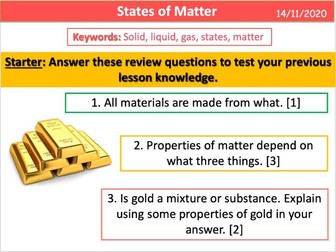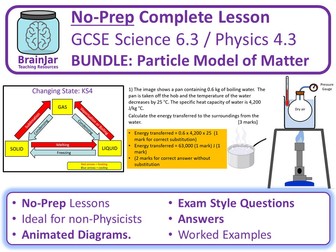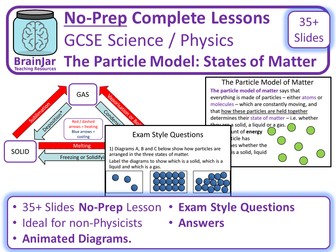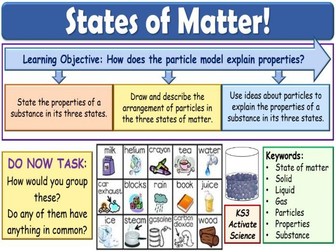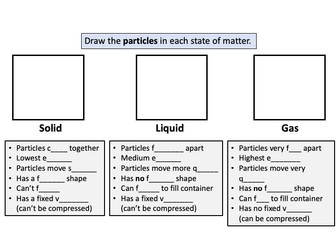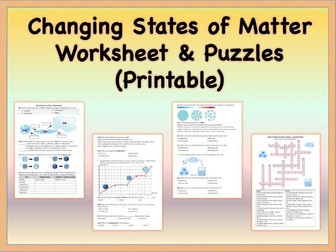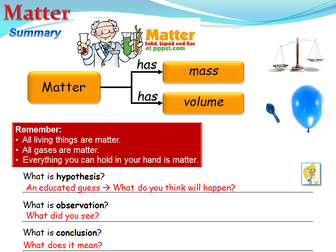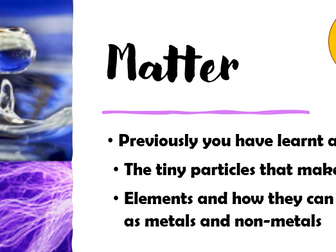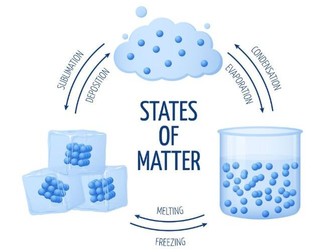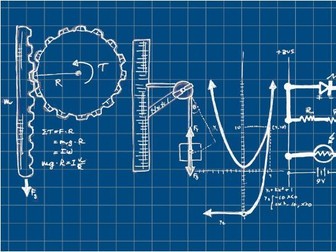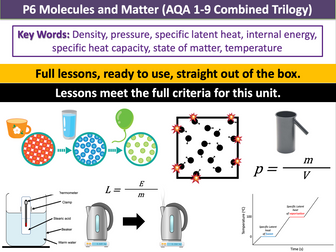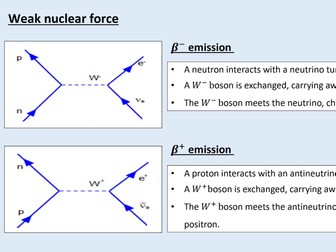States of Matter
<p>KS3 new for the Activate 1 unit ‘Particles and their Behaviour’.</p>
<p>Full lesson ready to use straight ‘out of the box’.</p>
<p>Similar structure to my other power points following the input - activity - review phasing<br />
plenary sections for progress checking<br />
Clear learning objectives and outcomes<br />
Modern and engaging layout<br />
Little adaptation needed<br />
Covers an hour lesson of content matched to the specification<br />
31 ppt slides</p>
<p>Please give constructive feedback :D</p>
